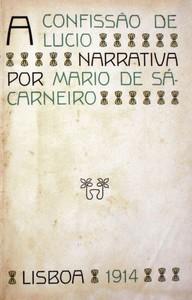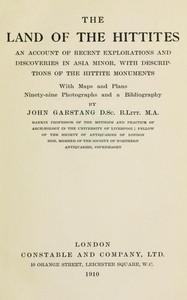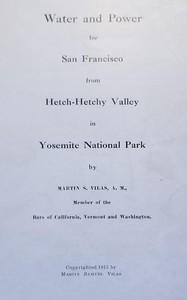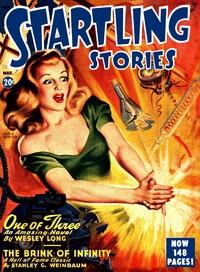|
|
Read this ebook for free! No credit card needed, absolutely nothing to pay.Words: 29392 in 16 pages
This is an ebook sharing website. You can read the uploaded ebooks for free here. No credit cards needed, nothing to pay. If you want to own a digital copy of the ebook, or want to read offline with your favorite ebook-reader, then you can choose to buy and download the ebook.

: A confissão de Lucio: Narrativa. by S Carneiro M Rio De - Portuguese fiction 20th century@FreeBooksThu 08 Jun, 2023 Introductory 123 Manatee 125 Toucan 135 Paroquet 139 Knowledge of tropical animals by Mound-Builders 142 Other errors of identification 144 Skill in sculpture of the Mound-Builders 148 Generalization not designed 149 Probable totemic origin 150 Animal mounds 152 The "Elephant" mound 152 The "Alligator" mound 158 Human sculptures 160 Indian and mound-builders' art compared 164 General conclusions 166 Fig. 4.--Otter from Squier and Davis 128 5.--Otter from Squier and Davis 128 6.--Otter from Rau. Manatee from Stevens 129 7.--Manatee from Stevens 129 8.--Lamantin or Sea-Cow from Squier and Davis 130 9.--Lamantin or Sea-Cow from Squier 130 10.--Manatee 132 11.--Manatee 132 12.--Cincinnati Tablet--back. From Squier and Davis 133 13.--Cincinnati Tablet--back. From Short 134 14.--Toucan from Squier and Davis 135 15.--Toucan from Squier and Davis 135 16.--Toucan from Squier and Davis 136 17.--Toucan as figured by Stevens 137 18.--Keel-billed Toucan of Southern Mexico 139 19.--Paroquet from Squier and Davis 140 20.--Owl from Squier and Davis 144 21.--Grouse from Squier and Davis 144 22.--Turkey-buzzard from Squier and Davis 145 23.--Cherry-bird 145 24.--Woodpecker 146 25.--Eagle from Squier and Davis 146 26.--Rattlesnake from Squier and Davis 147 27.--Big Elephant Mound in Grant County, Wisconsin 153 28.--Elephant Pipe. Iowa 155 29.--Elephant Pipe. Iowa 156 30.--The Alligator Mound near Granville, Ohio 159 31.--Carvings of heads 162 32.--Carvings of heads 162 33.--Carvings of heads 162 34.--Carving of head 163 35.--Carving of head 163 ANIMAL CARVINGS FROM MOUNDS OF THE MISSISSIPPI VALLEY. BY H. W. HENSHAW. INTRODUCTORY. The considerable degree of decorative and artistic skill attained by the so-called Mound-Builders, as evidenced by many of the relics that have been exhumed from the mounds, has not failed to arrest the attention of archaeologists. Among them, indeed, are found not a few who assert for the people conveniently designated as above a degree of artistic skill very far superior to that attained by the present race of Indians as they have been known to history. In fact, this very skill in artistic design, asserted for the Mound-Builders, as indicated by the sculptures they have left, forms an important link in the chain of argument upon which is based the theory of their difference from and superiority to the North American Indian. Eminent as is much of the authority which thus contends for an artistic ability on the part of the Mound-Builders far in advance of the attainments of the present Indian in the same line, the question is one admitting of argument; and if some of the best products of artistic handicraft of the present Indians be compared with objects of a similar nature taken from the mounds, it is more than doubtful if the artistic inferiority of the latter-day Indian can be substantiated. Deferring, however, for the present, any comparison between the artistic ability of the Mound-Builder and the modern Indian, attention may be turned to a class of objects from the mounds, notable, indeed, for the skill with which they are wrought, but to be considered first in another way and for another purpose than mere artistic comparison. As the term Mound-Builders will recur many times throughout this paper, and as the phrase has been objected to by some archaeologists on account of its indefiniteness, it may be well to state that it is employed here with its commonly accepted signification, viz: as applied to the people who formerly lived throughout the Mississippi Valley and raised the mounds of that region. It should also be clearly understood that by its use the writer is not to be considered as committing himself in any way to the theory that the Mound-Builders were of a different race from the North American Indian. Among the more interesting objects left by the Mound-Builders, pipes occupy a prominent place. This is partly due to their number, pipes being among the more common articles unearthed by the labors of explorers, but more to the fact that in the construction of their pipes this people exhibited their greatest skill in the way of sculpture. In the minds of those who hold that the Mound-Builders were the ancestors of the present Indians, or, at least, that they were not necessarily of a different race, the superiority of their pipe sculpture over their other works of art excites no surprise, since, however prominent a place the pipe may have held in the affections of the Mound-Builders, it is certain that it has been an object of no less esteem and reverence among the Indians of history. Certainly no one institution, for so it may be called, was more firmly fixed by long usage among the North American Indians, or more characteristic of them, than the pipe, with all its varied uses and significance. Perhaps the most characteristic artistic feature displayed in the pipe sculpture of the Mound-Builders, as has been well pointed out by Wilson, in his Prehistoric Man, is the tendency exhibited toward the imitation of natural objects, especially birds and animals, a remark, it may be said in passing, which applies with almost equal truth to the art productions generally of the present Indians throughout the length and breadth of North America. As some of these sculptured animals from the mounds have excited much interest in the minds of archaeologists, and have been made the basis of much speculation, their examination and proper identification becomes a matter of considerable importance. It will therefore be the main purpose of the present paper to examine critically the evidence offered in behalf of the identification of the more important of them. If it shall prove, as is believed to be the case, that serious mistakes of identification have been made, attention will be called to these and the manner pointed out in which certain theories have naturally enough resulted from the premises thus erroneously established. It may be premised that the writer undertook the examination of the carvings with no theories of his own to propose in place of those hitherto advanced. In fact, their critical examination may almost be said to have been the result of accident. Having made the birds of the United States his study for several years, the writer glanced over the bird carvings in the most cursory manner, being curious to see what species were represented. The inaccurate identification of some of these by the authors of "The Ancient Monuments of the Mississippi Valley" led to the examination of the series as a whole, and subsequently to the discussion they had received at the hands of various authors. The carvings are, therefore, here considered rather from the stand-point of the naturalist than the archaeologist. Believing that the question first in importance concerns their actual resemblances, substantially the same kind of critical study is applied to them which they would receive were they from the hands of a modern zoological artist. Such a course has obvious disadvantages, since it places the work of men who were in, at best, but a semi-civilized condition on a much higher plane than other facts would seem to justify. It may be urged, as the writer indeed believes, that the accuracy sufficient for the specific identification of these carvings is not to be expected of men in the state of culture the Mound-Builders are generally supposed to have attained. To which answer may be made that it is precisely on the supposition that the carvings were accurate copies from nature that the theories respecting them have been promulgated by archaeologists. On no other supposition could such theories have been advanced. So accurate indeed have they been deemed that they have been directly compared with the work of modern artists, as will be noticed hereafter. Hence the method here adopted in their study seems to be not only the best, but the only one likely to produce definite results. If it be found that there are good reasons for pronouncing the carvings not to be accurate copies from nature, and of a lower artistic standard than has been supposed, it will remain for the archaeologist to determine how far their unlikeness to the animals they have been supposed to represent can be attributed to shortcomings naturally pertaining to barbaric art. If he choose to assume that they were really intended as imitations, although in many particulars unlike the animals he wishes to believe them to represent, and that they are as close copies as can be expected from sculptors not possessed of skill adequate to carry out their rude conceptions, he will practically have abandoned the position taken by many prominent archaeologists with respect to the mound sculptors' skill, and will be forced to accord them a position on the plane of art not superior to the one occupied by the North American Indians. If it should prove that but a small minority of the carvings can be specifically identified, owing to inaccuracies and to their general resemblance, he may indeed go even further and conclude that they form a very unsafe basis for deductions that owe their very existence to assumed accurate imitation. Free books android app tbrJar TBR JAR Read Free books online gutenberg More posts by @FreeBooks
: The land of the Hittites An account of recent explorations and discoveries in Asia Minor with descriptions of the Hittite monuments by Garstang John Sayce A H Archibald Henry Author Of Introduction Etc - Hittites; Turkey Antiquities@FreeBooksThu 08 Jun, 2023

: Water and power for San Francisco from Hetch-Hetchy Valley in Yosemite National Park by Vilas Martin Samuel - Water-supply California San Francisco; Hetch Hetchy Valley (Calif.)@FreeBooksThu 08 Jun, 2023
|
Terms of Use Stock Market News! © gutenberg.org.in2025 All Rights reserved.






